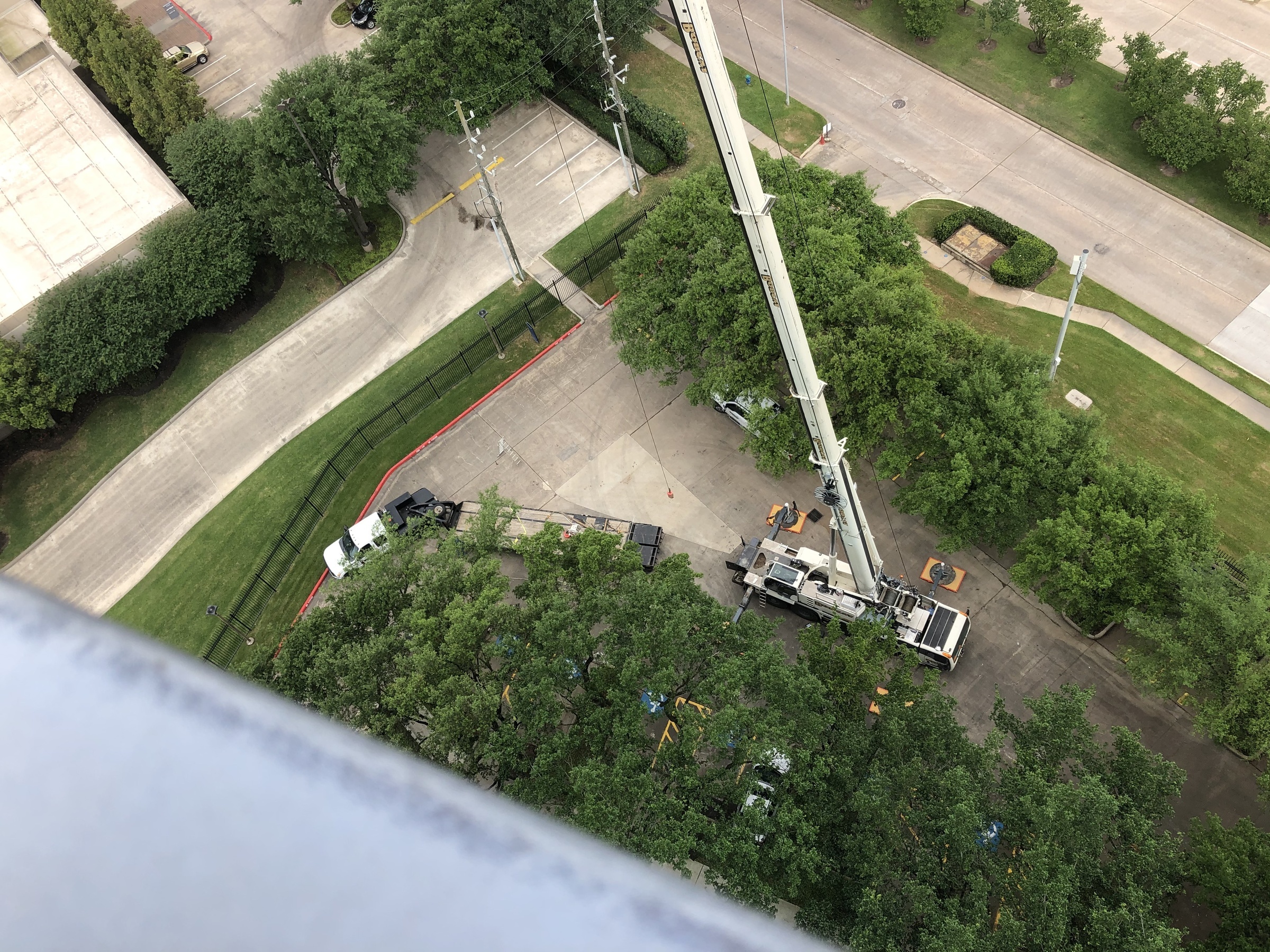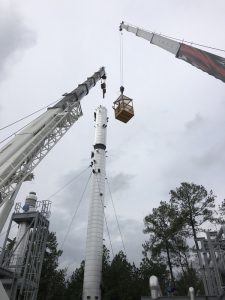
Versatility is the key to efficiency in construction and agriculture. One piece of equipment that exemplifies this is the telehandler. Also known as a telescopic handler, this machine has revolutionized the way we lift, move, and place heavy loads across various industries.
In this guide, Bobcat Contracting LLC, a crane rental company in Texas, goes over what you should know about telehandlers, including their capabilities and why they’ve become an important tool on job sites.
What is a Telehandler?
A telehandler, short for telescopic handler, is a multifunctional piece of heavy machinery that combines the lifting capabilities of a forklift with the reach of a crane. Its main feature is a telescopic boom that can extend and retract, allowing for better vertical and horizontal reach. These machines are known by many names in the industry, including telescopic forklift, lull, teleporter, reach forklift, and zoom boom. Telehandlers have cemented their place as a staple in construction, agriculture, waste management, and recycling operations.
The Parts of a Telehandler
The main part of the machine is its telescopic boom which is an extendable arm that gives the telehandler its reach and lifting abilities. The operator controls the machine from a cab which is normally designed with excellent visibility in mind. The chassis is the base of the telehandler and is often engineered for stability on rough terrain. At the end of the boom, you’ll find the attachment point, which allows for many tools to be fitted. You might also find stabilizers on larger models to provide additional support during heavy lifts.
The Capabilities and Applications of Telehandlers
Here are some of the main uses and applications of telehandlers:
Lifting and Transporting
Telehandlers are great at moving heavy loads across construction sites and agricultural settings. They can lift and transport:
- Pallets of materials
- Steel beams
- Concrete blocks
- Bricks and timber
- Earth and aggregates
- Waste materials
Reaching High and Far
With their extendable booms, telehandlers can access areas that would be challenging for regular forklifts. This makes them ideal for:
- Placing materials on upper floors of buildings under construction
- Stacking hay bales in high barns
- Loading and unloading trucks from one side
Rough Terrain Performance
Telehandlers are designed to operate well on uneven ground. This makes them highly valuable on:
- Construction sites with unpaved surfaces
- Agricultural fields and farmyards
- Recycling centers and scrapyards
Versatility Through Attachments
One of the telehandler’s greatest strengths is its ability to use various attachments. Some common attachments include:
- Fork carriages
- Buckets
- Crane jibs
- Work platforms
- Lifting hooks
This versatility allows a single machine to perform the functions of multiple pieces of equipment, saving time and resources on job sites.
The Sizes and Lifting Capacities of Telehandlers
Telehandlers come in a range of sizes to suit different job requirements:
- Super compact models: Ideal for indoor use or tight spaces.
- Compact telehandlers: Suitable for small construction sites or landscaping projects.
- Standard lift models: The workhorses of most construction sites.
- High lift telehandlers: For reaching extreme heights, up to 20 meters.
- Heavy load models: Capable of lifting up to 16,000 lbs.
When selecting a telehandler, it’s important to consider both the weight of the loads you’ll be lifting and the height you need to reach. Keep in mind that the maximum lift capacity typically decreases as the boom extends.
What to Consider About Safety and Training
Operating a telehandler requires skill and proper training. As these machines are highly complex and can cause accidents, safety should always be a top priority. Operators should always perform daily equipment checks before operation and be acutely aware of the telehandler’s load capacity, never exceeding it. Understanding how the load capacity changes as the boom extends is important for safe operation.
Ground conditions and stability are also key factors to consider, as is maintaining clear visibility at all times. In situations where visibility might be compromised, using spotters can greatly enhance safety. Above all, proper training and certification for all operators is not just recommended – it’s essential.
Understanding the Differences Between Telehandlers and Forklifts
While telehandlers and forklifts may seem similar at first glance, they have distinct differences that make them suitable for different applications. Telehandlers offer greater reach and lifting height and can operate on rough terrain which makes them ideal for outdoor use and large construction sites. Their versatility through multiple attachments is unmatched.
Forklifts, on the other hand, are more compact and maneuverable in tight spaces, which makes them specialized for warehouse and indoor use. They generally have a higher lifting capacity at full extension and are more fuel-efficient for constant use in a fixed location.
Choosing the Right Telehandler for Your Project
Selecting the appropriate telehandler for your needs depends on several factors. You’ll need to consider the maximum load weight you need to lift, the maximum height you need to reach, and the type of terrain you’ll be operating on. The tasks and attachments required, whether you’ll be working indoors or outdoors, and the frequency and duration of use are all important considerations. When you evaluate these factors, you can ensure that you choose a telehandler that will meet your project requirements efficiently and safely.
The Future of Telehandlers
As technology advances, so do telehandlers. The industry is seeing developments such as electric and hybrid models for reduced emissions, improved safety features like object detection systems, and better telematics for fleet management and maintenance scheduling. There’s also a trend towards increased automation and remote operation. These innovations promise to make telehandlers even more efficient, safe, and versatile in the future.
Contact Bobcat Contracting LLC for a Free Quote on Crane Rental in Texas!
If you’re in Texas and looking for telehandler and crane rental services, Bobcat Contracting LLC is here to help. Our fleet of modern cranes and experienced operators can handle projects of any size. We invite you to contact us today for a free quote and let us help you lift your project to new heights. With Bobcat Contracting LLC, you’re partnering with experts who understand your needs and are committed to your project’s success.

